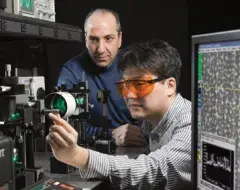
Each DHS Center of Excellence (COE) is led by a U.S. college or university in partnership with other academic institutions; industry; national laboratories; federally funded research and development centers; state, local, tribal and territorial homeland security agencies; and first responder groups.
By leveraging extensive public and private networks, CoEs are able to conduct groundbreaking research resulting in rigorous, objective knowledge products and timely solutions for DHS Components. Each COE works under a cooperative agreement that provides annual management and research funding over the duration of the award.
The Emeritus Centers of Excellence (COEs) have completed their OUP funded period of performance to develop networks of university-led research. The network and knowledge on topics important to the Department can be accessed for specific projects by those across DHS and the U.S. government.
- Arctic Domain Awareness Center (ADAC) - Led by University of Alaska
- Awareness and Localization of Explosives-Related Threats (ALERT) - Led by Northeastern University
- Borders, Trade and Immigration Institute (BTI) - Led by University of Houston
- Command, Control and Interoperability Center for Advanced Data Analysis (CCICADA) - Led by Rutgers University
- Center of Excellence for Emerging Zoonotic and Animal Diseases (CEEZAD) - Led by Kansas State University
- Coastal Resilience Center (CRC) - Led by Jackson State University & University of North Carolina at Chapel Hill
- Center for Risk and Economic Analysis of Threats and Emergencies (CREATE) - Led by University of Southern California
- Food Protection and Defense Institute (FPDI) - Led by University of Minnesota
- Institute for Infectious Animal Diseases (IIAD) - Led by Texas A&M University
- National Consortium for the Study of Terrorism and Responses to Terrorism (START) - Led by University of Maryland
- Visual Analytics for Command, Control, and Interoperability Environments (VACCINE) - Led by Purdue University
Throughout the year, many DHS Centers of Excellence issue requests for information and calls for proposals on topics of importance to the homeland security mission. Visit S&T’s Funding and Partnership Opportunities web page to view current announcements.
Contact: UniversityPrograms@hq.dhs.gov









